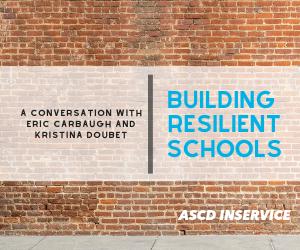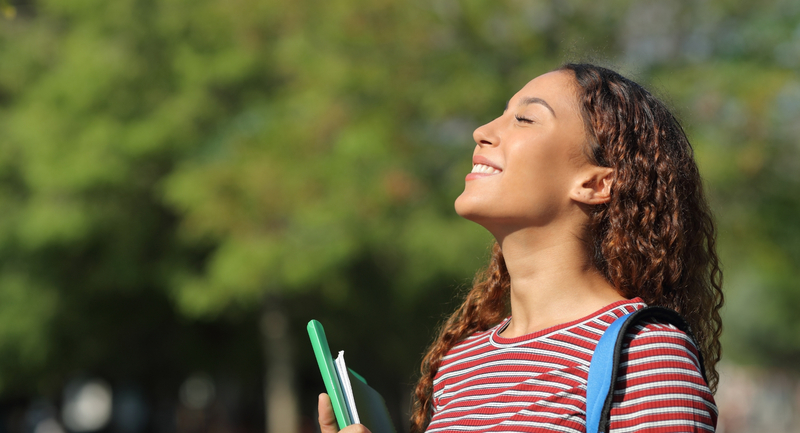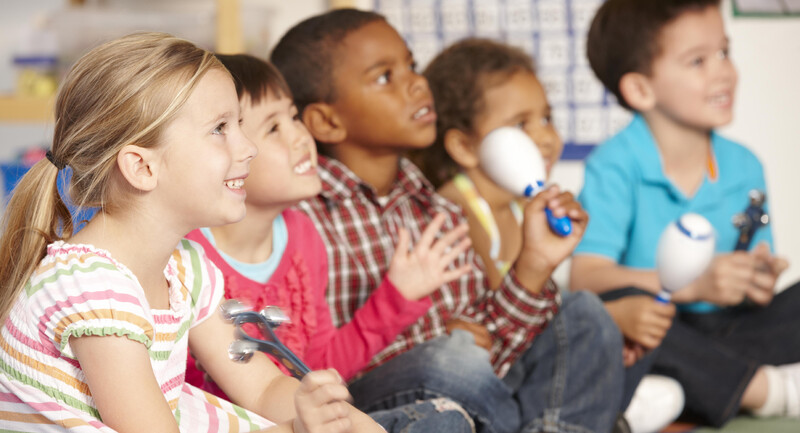It is no secret that community and human connection suffered during the COVID-19 pandemic. Now more than ever, the well-being of students is paramount, and young people need caring adults who can model and help students build healthy relationships.
While many educators, schools, and districts are turning to social-emotional learning (SEL) as the framework to support students’ well-being and mental health, SEL can be perceived as difficult to get a handle on, especially at the secondary grade levels. One common question in conversations about SEL is, “How is this supposed to look in the classroom?” This is why it is crucial that educators be brought into the conversation as key players in supporting student wellness. Incorporating SEL into instruction can be a mindset shift for many educators, as instructional minutes no longer only represent academics. It is critical for educators to recognize that SEL minutes are instructional minutes.
It is critical for educators to recognize that SEL minutes are instructional minutes.
Many school systems have multiple treatments within a multi-tiered system of supports (MTSS) to intervene and support students’ needs. Similarly, schools can approach supporting the mental and emotional health of the whole child through the lens of explicit SEL and integrated SEL. Both types of SEL are integral supports for students. Explicit SEL references intensive supports, such as targeted SEL lessons, consultation with a mental health clinician, and wraparound services. Integrated SEL is more nuanced, especially at the secondary grade levels, where students experience varied teacher expectations: A school-wide integrated SEL approach can unify teaching practices and collaboration for effective alignment of Tier 1 universal supports to be implemented across classrooms.
SEL in Classroom Routines
As educators prepare young people for the “real world,” imparting content knowledge in secondary classrooms can sometimes take priority over integrated SEL. Yet, secondary educators should design lessons where integrated SEL is demonstrated through MTSS Tier 1 universal instruction. This ensures support of learners’ psychological safety in order to access the curriculum. Here are some examples of integrated SEL within the core instruction:
- Cooperative learning strategies that allow students to establish and maintain positive relationships.
- Project-based learning that helps students set and achieve positive goals while making responsible decisions.
- Participation in activities that increase academic discourse, which raises student awareness around attitude and management of emotions (e.g., Socratic seminars, debates, shared inquiry circles, and presentations).
- Real-world problem-solving that allows students to feel and show empathy for others and develop citizenship skills.
In addition to integrated SEL demonstrated in universal instruction, educators can also embed SEL in classroom routines. Our school has identified three unifying integrated SEL practices to support prosocial student behaviors in our classrooms: Threshold/Strong Start, Class Charter Agreement, and Community Building Circles.
Threshold/Strong Start
These routine-based strategies come from Doug Lemov’s Teach Like a Champion (Jossey-Bass, 2021). "Threshold'' refers to teachers positively greeting students at the doorway to the classroom. Both teacher and student are able to begin class with a positive interaction at each transition of their day.
Teachers know students the best and are often collecting data points minute-by-minute on how to support a student's needs. “Threshold” provides teachers with an opportunity to assess a student’s “invisible backpack”—to get a read on what “unpacked” events or emotions the student may be bringing into the classroom that day—so that the teacher can proactively check in with the student, adapt the lesson for the student, and/or activate additional supports.
“Strong Start” helps teachers consistently provide students with a “Do Now” warm-up activity as they reset and integrate into a new classroom setting. Such activities might include writing prompts, previewing lesson content, revisiting past learning, and spending silent time in nature.
Class Charter Agreement
The Yale RULER activity provides space for student voice and safety. The practice of building classroom charters, as outlined by RULER, is for teachers who want to bypass the power dynamics that come with distributing a syllabus with a laundry list of rules. Class charters are a way for the teacher to facilitate the co-creation of standards and guidelines for student conduct in the classroom.
Teachers and students together create the charter for how they want to feel in the classroom, what actions will promote those feelings, and what agreed-upon actions will help prevent and manage conflict. It is best to revisit the class charter as needed and at each transition of the school year.
Community Building Circles
This practice is inspired by the work of Roxann Kriete and Carol Davis from The Morning Meeting Book (Center for Responsive Schools, 2017) and has been adapted for the secondary classroom. A Community Building Circle (CBC) is a daily, whole-group gathering designed to build community across differences. The CBC format is a positive, friendly ritual that helps make a classroom a safe space for students to meet each other and build trusting relationships that will transfer to productive learning. It consists of three parts:
- Inclusive Share (3 minutes, everyone participates): Students are prompted to share brief one word or sentence responses. Whoever holds the "talking piece" shares while everyone else listens. An example of a prompt might be: "What is one thing you're looking forward to over Spring Break?"
- Open Share (3 minutes, volunteer responses): Students share a quote, image, idea, passage, social concept, or aspect of their culture.
- Activity (8-10 minutes, everyone participates): The whole class engages in an activity, game, or challenge. Activity ideas that we use, as well as additional prompts and share topics, can be found here.
It is important for these integrated SEL strategies to be routine-based. The frequency gives young people (and adults) a sense of predictability when it comes to classroom activities. The following figure provides a framework for the frequency of SEL practices in classrooms.
Supporting Prosocial Behavior
While not an exhaustive list of integrated SEL strategies, these practices offer a starting place for any educator, school, or district that’s beginning to implement SEL in their community. Integrated SEL provides teachers and students with the tools to build community, relationships, and trust that fosters a positive climate both in the classroom and in the school as a whole.








